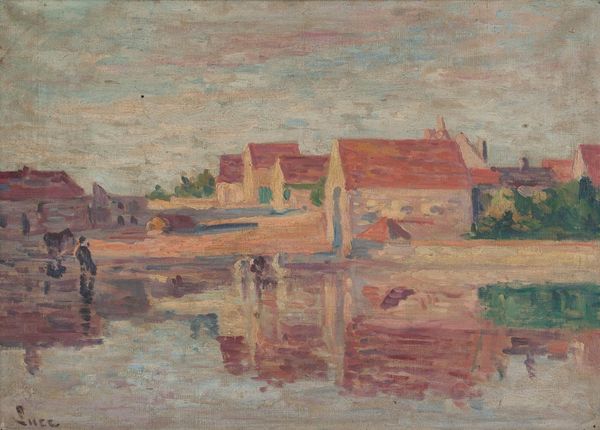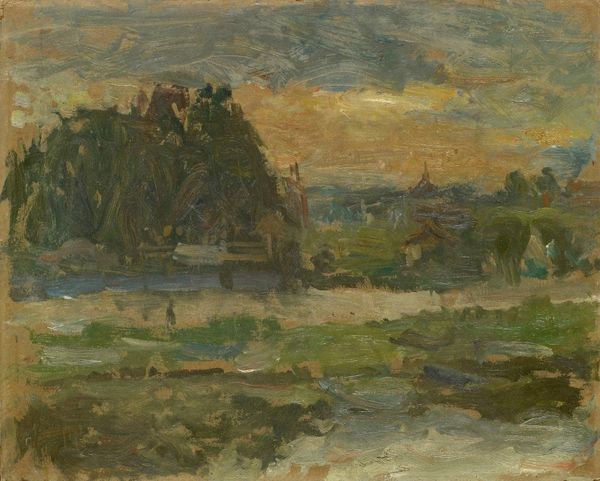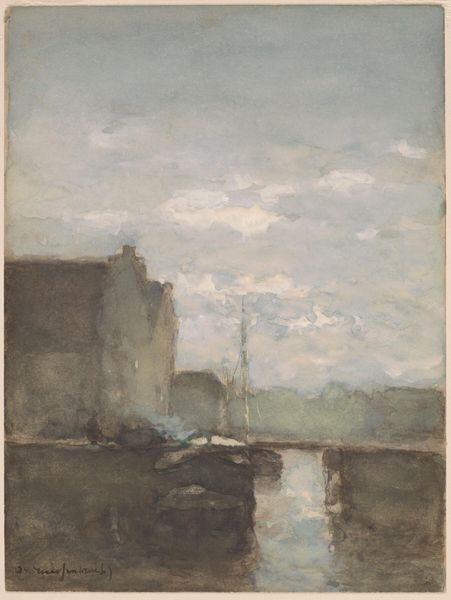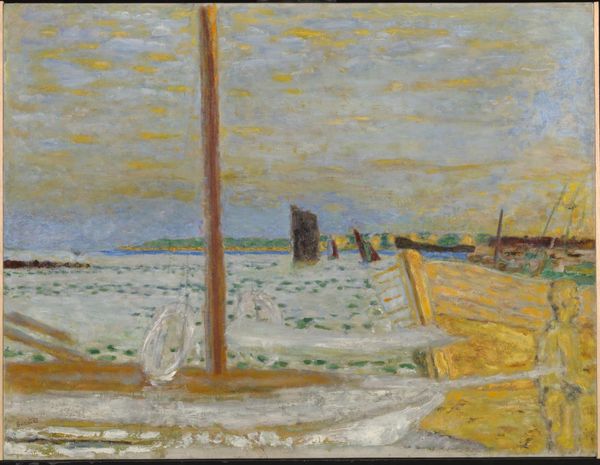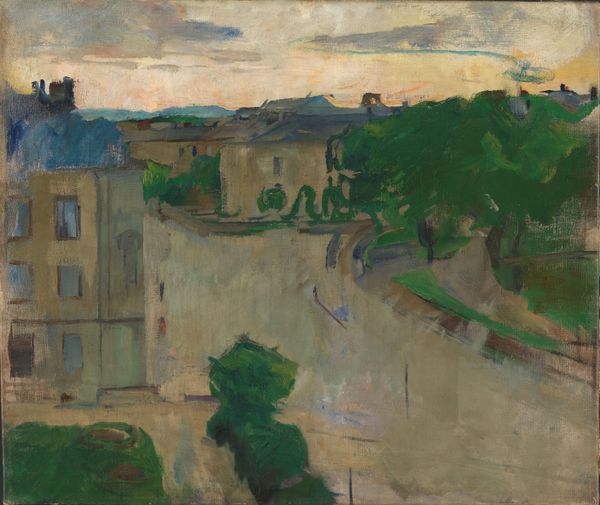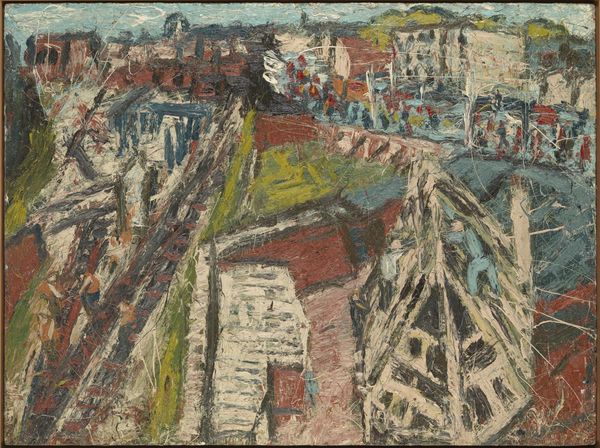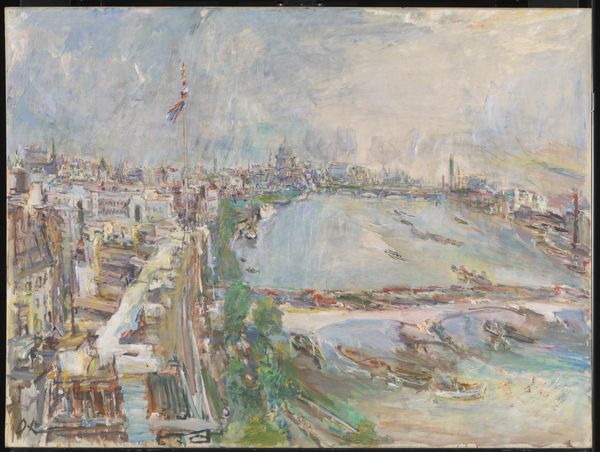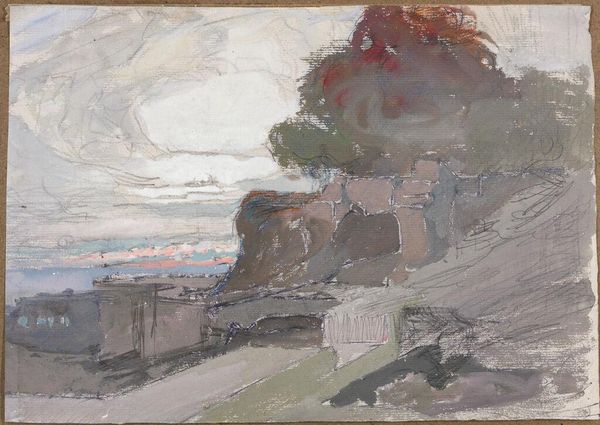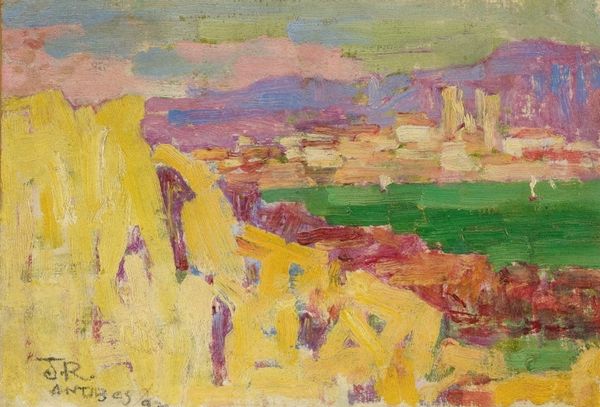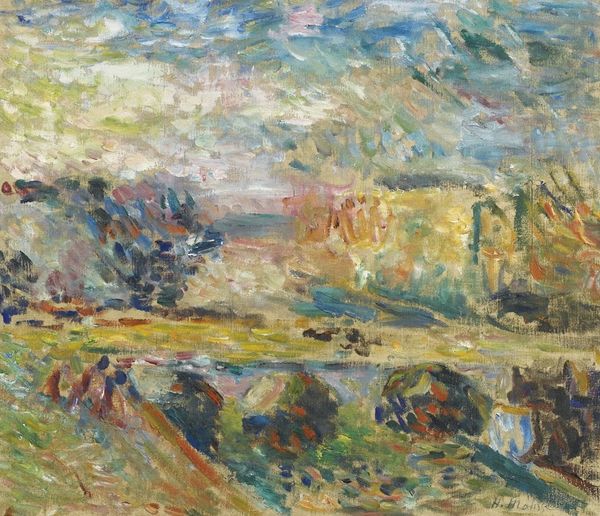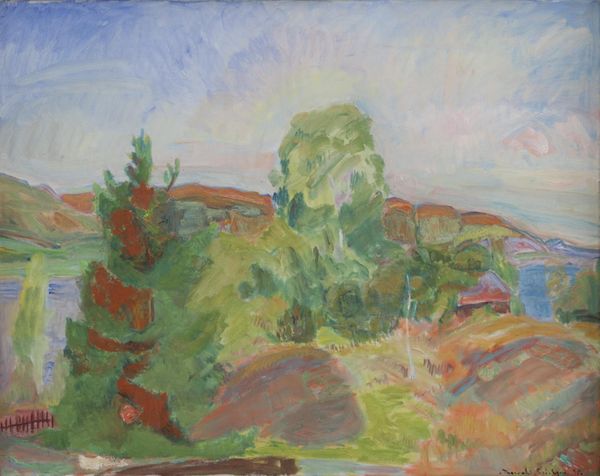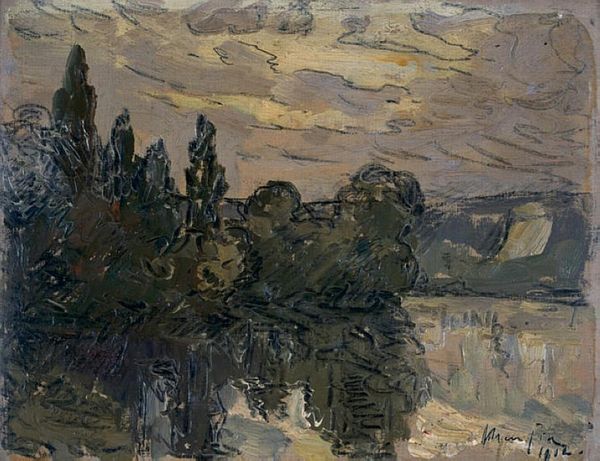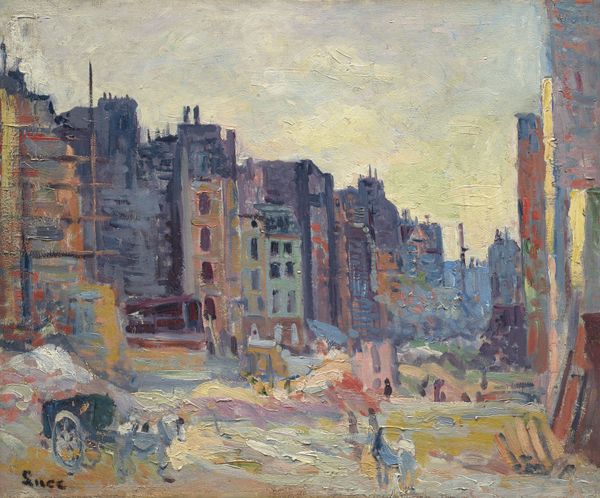
Dimensions: support: 460 x 375 mm frame: 689 x 608 x 81 mm
Copyright: © Succession Henri Matisse/DACS 2014 | CC-BY-NC-ND 4.0 DEED, Photo: Tate
Editor: Here we have Henri Matisse's "Notre-Dame," housed here at the Tate. The color palette feels so muted, almost melancholic. What do you see in the brushstrokes and composition? Curator: The composition presents a fascinating interplay between architectural form and painterly abstraction. Notice how Matisse deconstructs the Notre-Dame, focusing less on realistic representation and more on the arrangement of color and form. The impasto technique, the thick application of paint, is also noteworthy. Editor: So, it's less about the cathedral itself and more about how he's using paint to create an image? Curator: Precisely. Consider the relationship between the verticality of the cathedral and the horizontality of the river. How do these opposing forces contribute to the overall structure of the work? Editor: I see it now. It's all about the relationships between the different elements of the painting itself. Curator: Indeed. By attending to the formal elements, we unlock a deeper appreciation for Matisse's innovative approach.
Comments
Join the conversation
Join millions of artists and users on Artera today and experience the ultimate creative platform.
tate 7 months ago
⋮
Matisse painted numerous views of Notre-Dame, which he could see from his studio window in Paris. The cathedral glows in the sunlight, and a glancing shadow indicates that it is midday. By contrast, the river beneath is dark and richly coloured. A plume of smoke from the riverboats rises in front of the cathedral, linking the industrial and spiritual aspects of the city. This atmospheric detail echoes Impressionism. However, the painting's touches of strong, sometimes seemingly arbitrary colour, anticipate Matisse's later Fauvist work. Gallery label, August 2004
